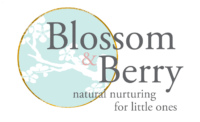The Practice Of Kangaroo Care/Skin To Skin Contact
“When babies are held naked against their mother’s skin, it is the closest they can get to being back in the warmth and security of the womb. It is the only place in which newborns have survived for the last million years, and developed toward optimal health. It is in our DNA to crave skin contact. Skin contact after birth supports the maturation of the nervous system as we continue to provide sensations and stimulus into the brain which is familiar to the baby from the womb. This allows a sense of continuing their journey from the safe environment of the womb into the world and makes adjustments easier”-Nils Bergham
Skin to skin is a low cost, easily accessible way to help regulate the health of premature or newborn babies. The human body offers all that a baby could need; food, warmth, love and security. The skin to skin contact we offer mimics the womb and is familiar to the baby’s senses and understanding of the world.Birth to one year is a critical period for the development of brain pathways. As connections in the brain are made, so are patterns of behaviour as described in the phrase;
“Neurons that fire together wire together”
We are creating a baby’s sense of the world from day one with the sensory input we provide.How much skin to skin a baby receives is variable and dependent on a parent’s own experience of touch, how she was parented and the culture she lives in. Skin to skin contact has been shown to be essential for the healthy development of a baby but cultural norms and historical advice and trends influence our ability to tune into our babies. The West generally puts emphasis on getting a baby to be independent and self regulate but separation from the mother is not something which the baby is programmed for and so he may protest. Sadly this is seen as a baby being difficult or troublesome when in fact he is just flowing with his genetic programming and survival instinct.
Skin to skin is also beneficial for mothers as it helps to produce oxytocin which adapts the body for breastfeeding and helps shrink the womb after birth, A mother’s body experiences an influx of oxytocin during and after birth and it is interesting to consider if a lack of this important hormone arising from clinical practice, separation, bottle feeding and crib sleeping affects a mother’s mental and emotional state. I love this quote from Nils Berhman as its so interesting to consider;
“There is a modern mindset that maintains that “mothering” is something old fashioned, something that is discriminatory and fosters gender inequality: the politically correct word is “parenting”. Fathers and mothers should share equally the load and work and trouble of being parents. To respond bluntly – parenting is possibly “politically correct” – but it is biologically incorrect. There are basic biological principles, embedded in the DNA and the neural circuitry of babies and their mothers, that vouch for a unique biological role for mother”
Benefits of skin-to-skin care during infancy may persist for years. A long-term study of babies who were in the NICU (neonatal intensive care unit) of an Israeli medical centre after birth found that benefits persisted years later. After assessing the children at 10 years of age, the researchers found benefits for those who had skin-to-skin care, including better maternal attachment behaviour, reduced maternal anxiety, enhanced child cognitive development, and mother-child reciprocity.
Origin of Kangaroo Care
Kangaroo care was originally developed in 1978 as a desperate move to save premature babies in resource-poor hospitals that lacked enough incubators. It began in Columbia and soon spread across the world as a beneficial practice for premature and newborn babies. It is now governed by the Kangaroo Foundation in Columbia. It has influenced the growth of interest in touch and massage for premature babies and new borns.
Benefits of Kangaroo Care
1. Improvement in heart and lung function.
Babies held skin-to-skin by their mothers tend to regulate their heart beats sooner after birth than those who are not. They also tend to have heart and breathing rates that are both more normal and more stable.
2. Stabilisation of body temperature.
Babies find it hard to regulate their body temperature due to less sweat glands than adults. When it comes to keeping a vulnerable newborn warm, a mother’s body is better than an incubator. One study that compared a nursery warmer to skin-to-skin care provided by the mother, and skin-to- skin care provided by the father found that the mum’s and dad’s bodies were better than an incubatorA mother’s body is truly amazing in its ability to change temperature to give her baby the optimum warmth after birth.
3. Regulation of blood sugar.
Skin-to-skin care in the hours after birth can help stabilise a baby’s blood sugar levels because the baby’s body is kept at the optimum temperature and it does not need to use extra energy to regulate it.
4. Initiation of breastfeeding.
Skin to skin can encourage breast feeding to occur. A baby placed on a mother’s belly can use it’s basic crawling reflex and sense of smell and ability to see contrasts to move towards the nipple to latch on.
5. Bacteria transference
When a baby is born via the vagina, he has the opportunity for his gut to be colonised with good bacteria found in the vagina. If this opportunity is missed, skin to skin offers another way for this to occur. Studies suggest that these good bacteria may protect against allergic disease.
6. Reduction in crying.
Studies show that babies who are held skin-to-skin contact, particularly by their mother, are apt to cry less than those separated from their mothers as they have security their mother is there.
7. Relief from pain.
Studies of babies experiencing clinical procedures show that babies experience less pain when held skin-to-skin during (or even immediately following) the procedure and that the duration of the pain is shortened by the close contact.
8. Recognition of cues
Skin to skin helps a mother attune to her baby and to begin to recognise her baby’s cues making it easier to respond to him. This is important for parental confidence and also maternal sensitivity.
9. A gentle welcome to the world
Skin-to-skin offer an easier adjustment from the womb to the world. As Ruth Feldman, a professor of psychology notes
“Every mammal,……has to be cuddled and in close proximity with its mother in the first days and weeks of life.”

